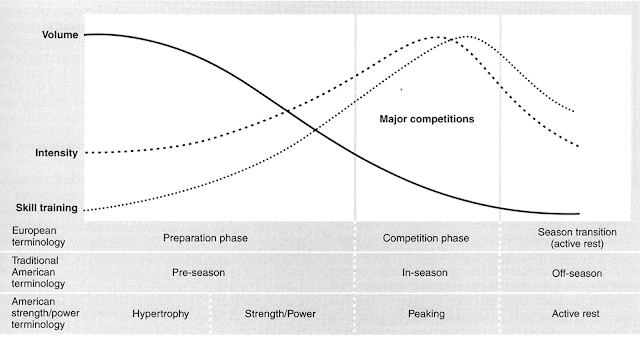When it comes to designing effective training programs, athletes and coaches often debate between traditional periodization and daily undulating periodization (DUP). Both methods aim to enhance athletic performance through structured planning but differ significantly in their approach and application. Understanding the distinctions between these two methodologies can help athletes tailor their training regimes to better meet their specific goals and needs.
Traditional Periodization: Structured Phases for Progressive Improvement
Traditional periodization is a systematic approach to training that divides the training cycle into distinct phases, each focusing on different aspects of fitness development. Typically, these phases include preparatory, hypertrophy, strength, and peaking phases, with specific goals and intensities for each phase. The primary objective is to progressively overload the body while allowing for adequate recovery to achieve peak performance during competition or testing phases.
During the preparatory phase, athletes focus on building endurance and establishing a solid fitness base. This is followed by the hypertrophy phase, where muscle size and strength are emphasized through moderate to high-volume training. The strength phase then shifts towards heavier weights and lower repetitions to enhance neuromuscular adaptation and maximal strength. Finally, the peaking phase involves tapering off training volume while maintaining intensity to optimize performance for competitions or tests.
Daily Undulating Periodization (DUP): Varied Intensity and Volume Within Weekly Cycles
In contrast to traditional periodization's linear progression through phases, DUP employs a more frequent variation in training variables within shorter time frames, typically within a week. This method involves changing the intensity (load), volume (sets and reps), or both on a daily basis. For instance, a DUP program might alternate between high-intensity, low-repetition sessions (strength emphasis) and moderate-intensity, high-repetition sessions (hypertrophy emphasis) throughout the week.
The key advantage of DUP lies in its ability to continuously stimulate different physiological adaptations without the extended periods of monotony that can accompany traditional periodization. By frequently varying training stimuli, DUP aims to prevent plateaus in performance and optimize overall athletic development. This approach is particularly beneficial for athletes who require a balance of multiple fitness components (e.g., strength, power, endurance) throughout their competitive season.
Choosing the Right Approach: Considerations and Applications
The selection between traditional periodization and DUP depends on several factors, including the athlete's training experience, specific sport demands, competition schedule, and individual response to training stimuli. Athletes preparing for a single peak event may find traditional periodization effective due to its structured progression towards a specific performance peak. Conversely, athletes involved in multi-event sports or year-round competition may benefit more from the flexibility and adaptability offered by DUP.
Moreover, DUP's emphasis on frequent variation may appeal to athletes who thrive on diversity in their training routines and prefer avoiding long periods of repetitive training stimuli. On the other hand, traditional periodization provides a clear roadmap for gradual progression and peak performance, making it suitable for athletes who respond well to structured, predictable training cycles.
Conclusion: Integrating Principles for Optimal Performance
In conclusion, both traditional periodization and daily undulating periodization are effective training methodologies designed to enhance athletic performance through strategic planning and manipulation of training variables. While traditional periodization focuses on structured phases with specific training goals, DUP offers flexibility and frequent variation to prevent adaptation plateaus and optimize overall fitness gains. Athletes and coaches should carefully consider their goals, sport-specific demands, and individual preferences when selecting between these two approaches, ultimately aiming to integrate principles from both methodologies to tailor a training program that maximizes performance potential and long-term athletic development.

No comments:
Post a Comment